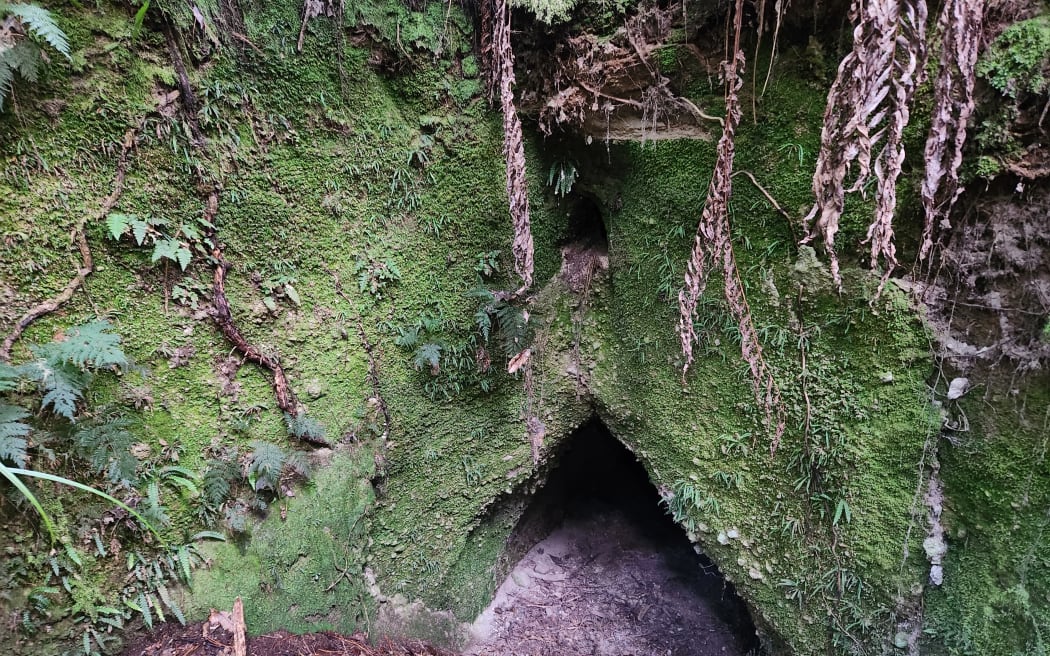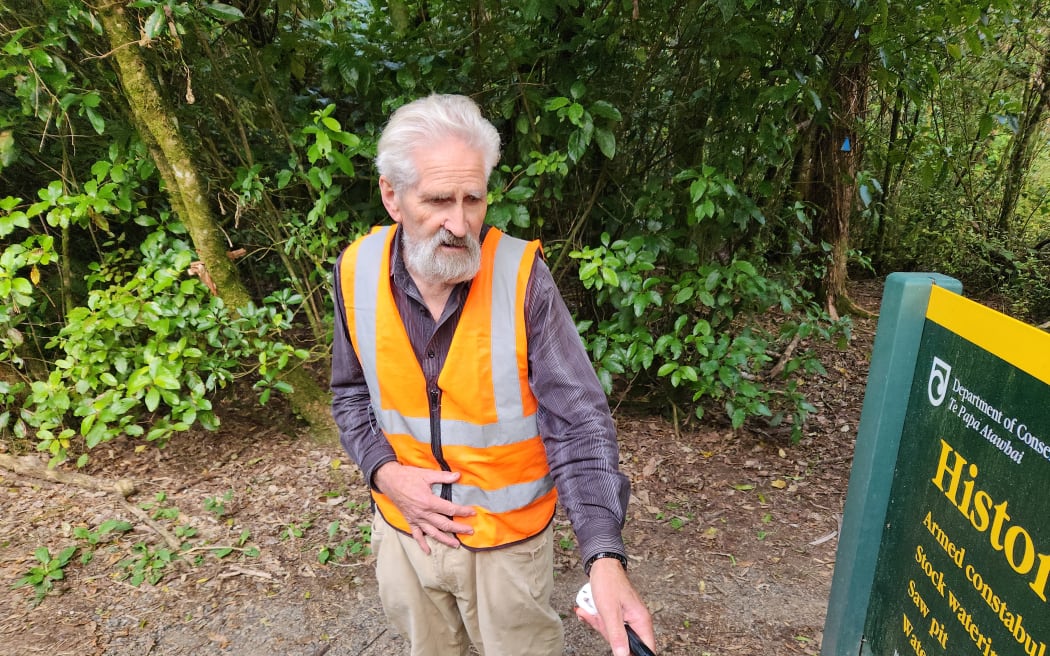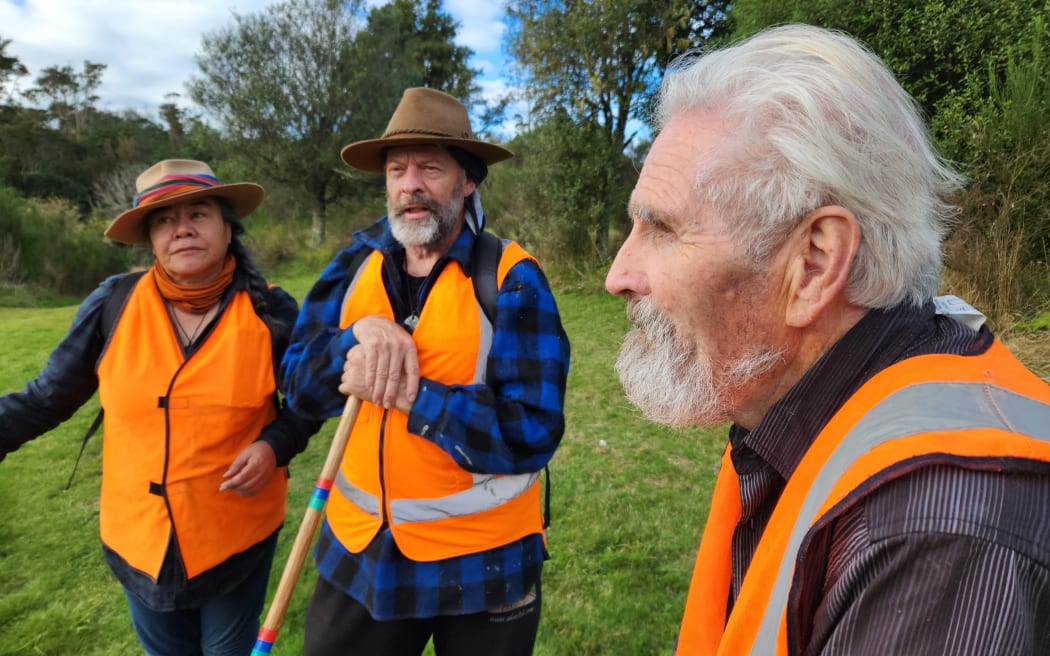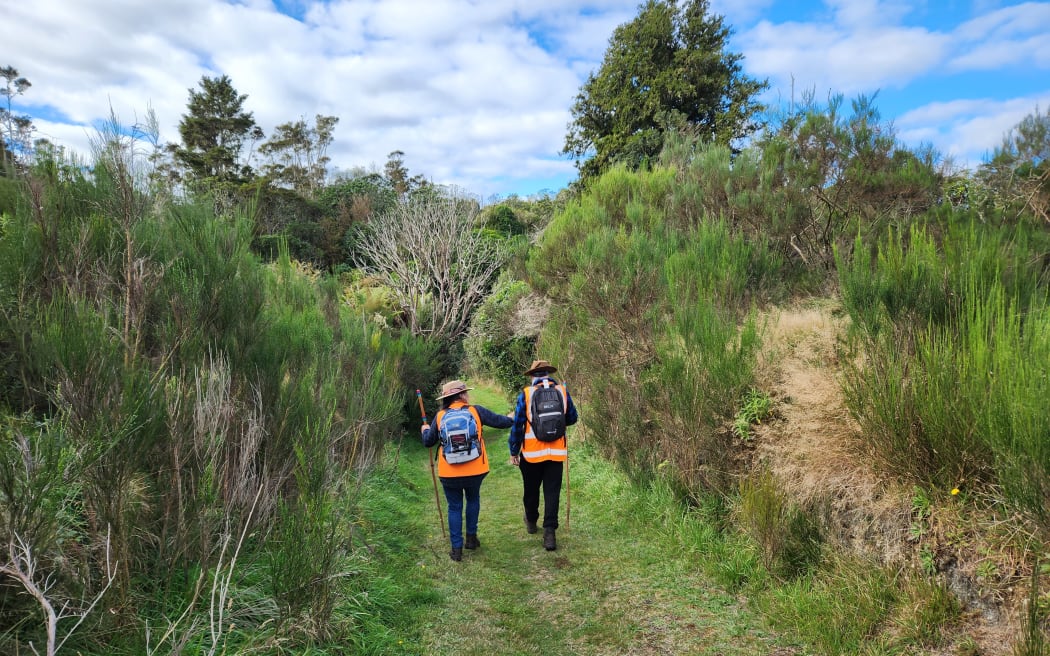Push your way through a tangle of bush not far from the Napier-Taupō highway and you might find yourself on an ancient pa site.
It may look like just a dip in the earth on a bush-clad plateau, but look closer behind the ferns and you might see a small triangular entry way - the work of human hands.
If you clamber down, you'll find yourself in an underground cavern and, in the gloom, signs of tools against the rock - a carved shelf, chimney flues, earth and rock scraped and shaped.
Only weta live in the hollowed-out tunnel now but it's thought tangata whenua once sheltered here hundreds of years ago.

The entry to one of the ancient tunnel houses located during a survey of culturally important sites at Opepe Photo: RNZ/Sally Round
I found myself underground among the weta while out exploring the Opepe reserve, with a group calling themselves the Taupō Moana Record-Keepers, among them Whaitaima Te Whare.
"My ancestors passed through here because it was a crossroads between Napier and Taupō," Te Whare told me as we scrambled along a rough track to the hidden spot. It is the confluence of the old coach road and the ancient Ripia walking track.
The area was a rich mahinga kai - an area for hunting and foraging.
Te Whare's partner Jeffrey Addison is just ahead in the bush. With him, Perry Fletcher, an historian and anthropologist in his 80s.
They're all dressed in high viz, with sturdy shoes and sticks, so they can manage the rough journey, very different from the more manicured trails leading to the site and remnants of a colonial stockade and township.
The area is most famous for the 1869 raid by Te Kooti's men on militia camped there en route from the Bay of Plenty. Nine soldiers were killed.
Soon after a stockade was built for the Armed Constabulary to defend the building of a road and telegraph line.
A township grew up housing about 200 people. There was even a hotel. After about 20 years the Opepe township dwindled and there are few signs left of its existence.

Perry Fletcher at the entry to Opepe Scenic and Historic Reserve Photo: RNZ/Sally Round
Fletcher was involved in the 1960s in helping form a trail through the reserve. He is irritated at the lack of information to point out the history of the area, especially its pre-European history.
"Nothing to mention there was any Māori interest in this area at all. Hundreds of years have been ignored."
Fletcher nimbly negotiates fallen logs and vines, as we clamber upwards through the bush.
He constantly scans the ground, spotting holes where palisade posts once stood, and keeping up a stream of commentary on what might have happened here.
He has gained a deep understanding through his research and connections to Māori elders going back many generations.
"We're in the central North Island where all the main tribes - north, south, east and west - have all interacted or crossed through at one time, so this, unlike Northland or areas of the South Island, has completely had overlapping histories, very complex Māori political, social histories."

Whaitaima TeWhare, Jeffrey Addison and Perry Fletcher are the Taupō Moana Record-Keepers, locating and monitoring culturally important sites in the region. Photo: RNZ/Sally Round
At the site of the tunnel house, Te Whare videos and photographs, while Addison climbs down, pointing our features, measuring and making mental notes.
There are many more sites like this in the bush and around the lake, he said.
Te Whare and Addison, through their website and videos , are storing up Fletcher's knowledge. They want to keep it alive for future generations.
"There's always opportunity to restore and correct the historical narrative and I believe we're at times now, (and it's) quite exciting, where, through hapū-led initiatives, we're going to see a bit of restoration of mana Mauri and mana whenua to this area," he added.
The group are careful to keep the pathways disguised until the merits, or otherwise, of opening up the area to more people can be properly explored.
Every time they come back, there's something new to discover, Addison said, and he is especially excited because of his family's connections to the whenua.
"Knowing about its history, particularly its Māori history, that's what moves me to the edge of my seat."

Whaitaima TeWhare and Jeffrey Addison set off through the Opepe reserve Photo: RNZ/Sally Round


